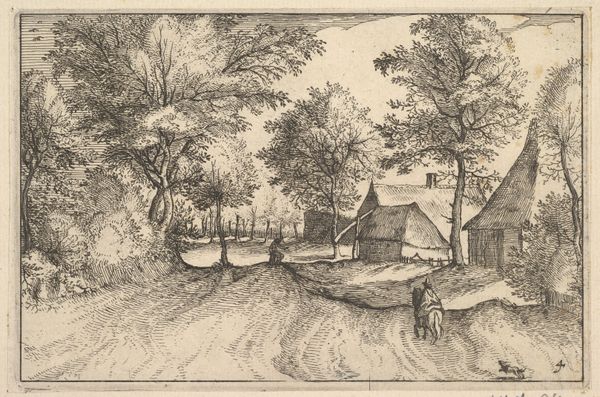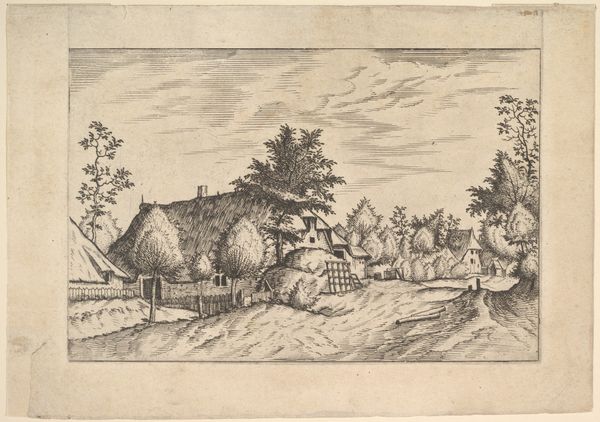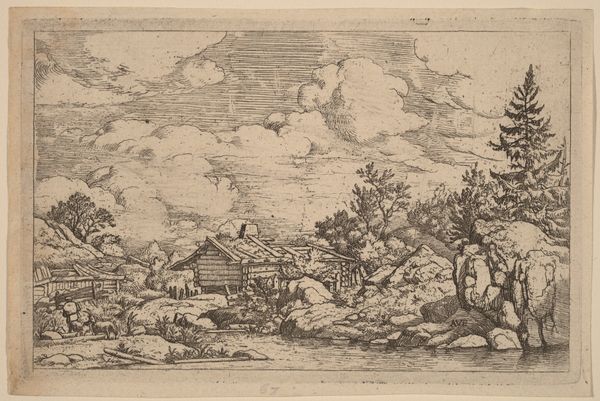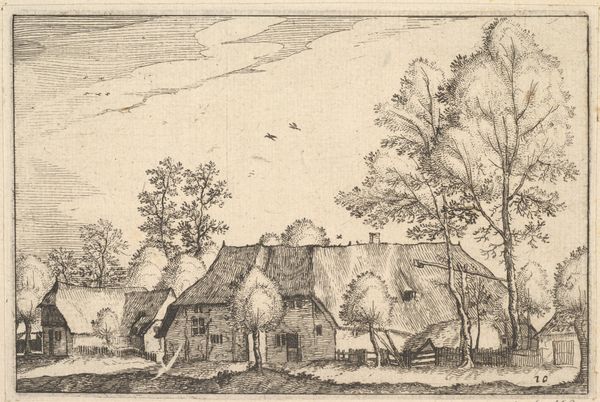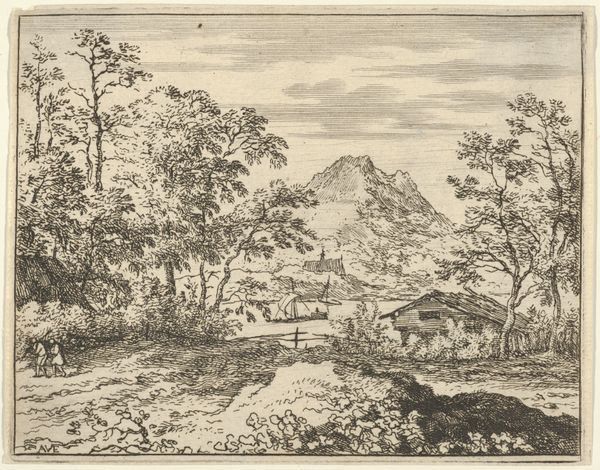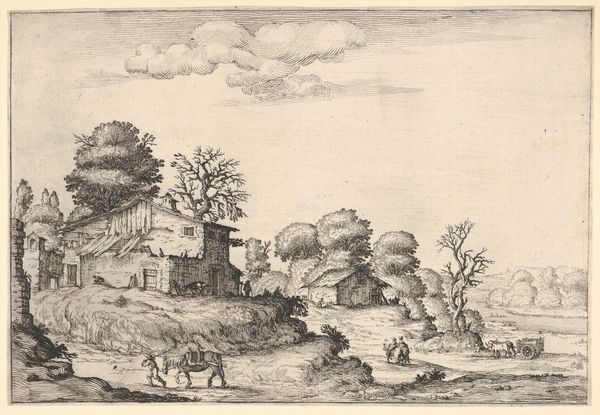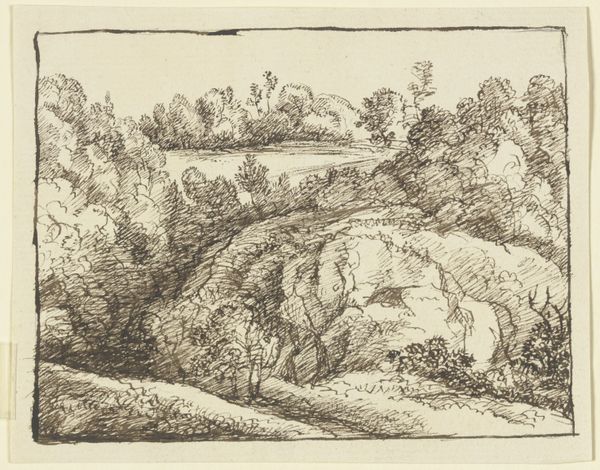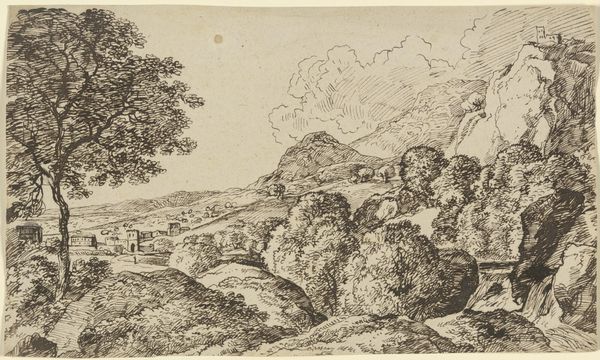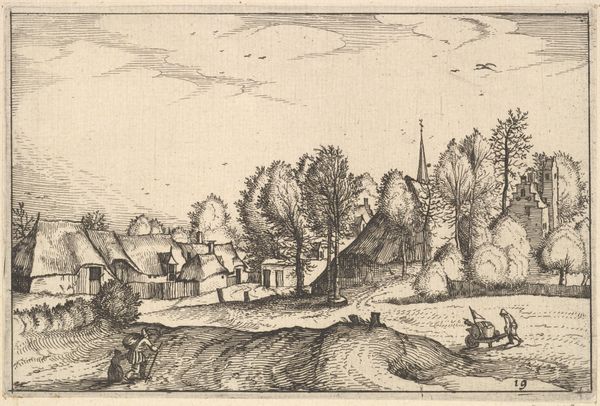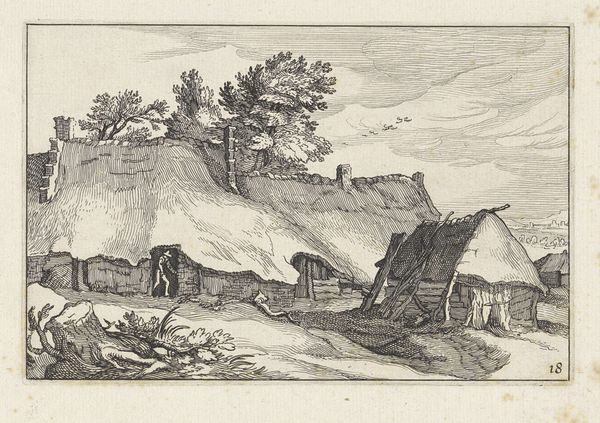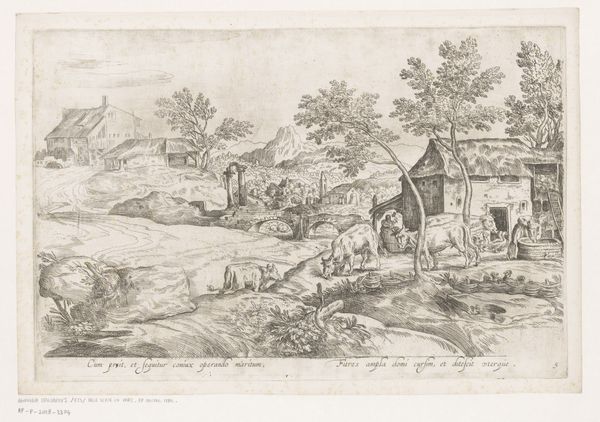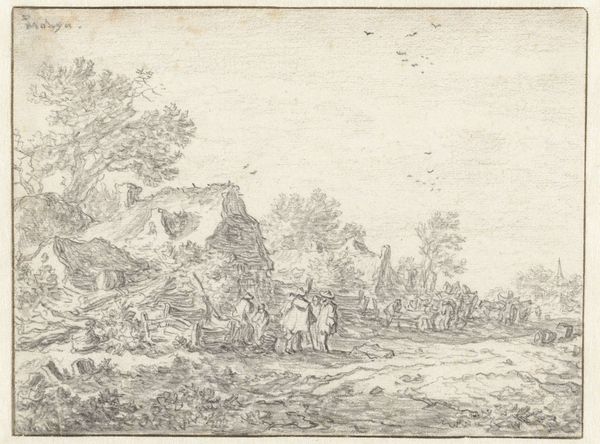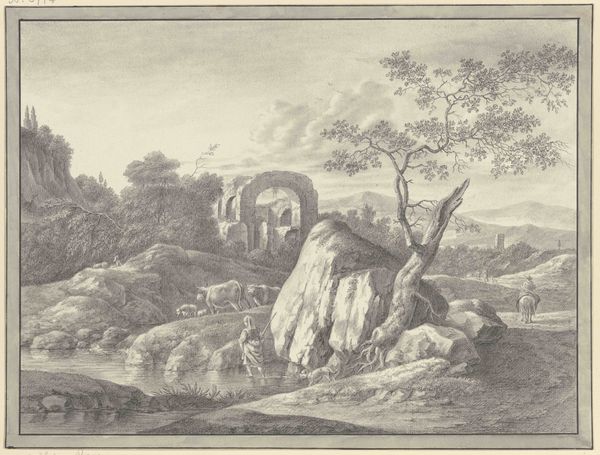
Village Road, plate 12 from "Regiunculae et Villae Aliquot Ducatus Brabantiae" 1605 - 1615
0:00
0:00
drawing, print, etching, ink, engraving, architecture
#
drawing
#
light pencil work
#
mechanical pen drawing
# print
#
pen sketch
#
etching
#
landscape
#
ink
#
human
#
engraving
#
architecture
Dimensions: Sheet: 4 in. × 6 3/16 in. (10.2 × 15.7 cm)
Copyright: Public Domain
Editor: This is "Village Road, plate 12 from \"Regiunculae et Villae Aliquot Ducatus Brabantiae\" by Claes Jansz. Visscher, dating from around 1605 to 1615. It’s an etching, engraving and ink print, currently housed at the Metropolitan Museum of Art. It feels so… quaint. Almost like looking into a dollhouse scene, despite the detail. What catches your eye in this piece? Curator: The seemingly simple scene actually presents a carefully constructed image of rural life and its social context during that time. These types of prints served as more than just pretty pictures; they offered a specific perspective on the Dutch countryside. Editor: A perspective… like who was the intended audience, and what did they want to see? Curator: Exactly! Prints like this catered to a growing urban population, offering a romanticized view of the countryside. The meticulous detail – the thatched roofs, the haystacks, the carefully placed figures – it all speaks to a desire for an ordered, picturesque, and arguably idealized version of rural life. Notice how even the labouring figure seems placed to enhance, rather than disrupt, the serenity. Editor: So it's less about documentary and more about creating a marketable image? Curator: Precisely. It reinforces a particular social and economic relationship between the urban centers and the rural areas they relied upon. It presents a vision designed to reassure and perhaps even appease an increasingly powerful urban class. Do you think it accomplished that goal? Editor: It’s interesting to consider the image not as an objective truth but as a carefully curated story intended for a specific audience. I’ll definitely look at landscapes differently from now on! Curator: Indeed. The "truth" in art is often shaped by who controls its production and distribution, and whose vision is being promoted. A fascinating layer to uncover when you view this pastoral scene.
Comments
No comments
Be the first to comment and join the conversation on the ultimate creative platform.
